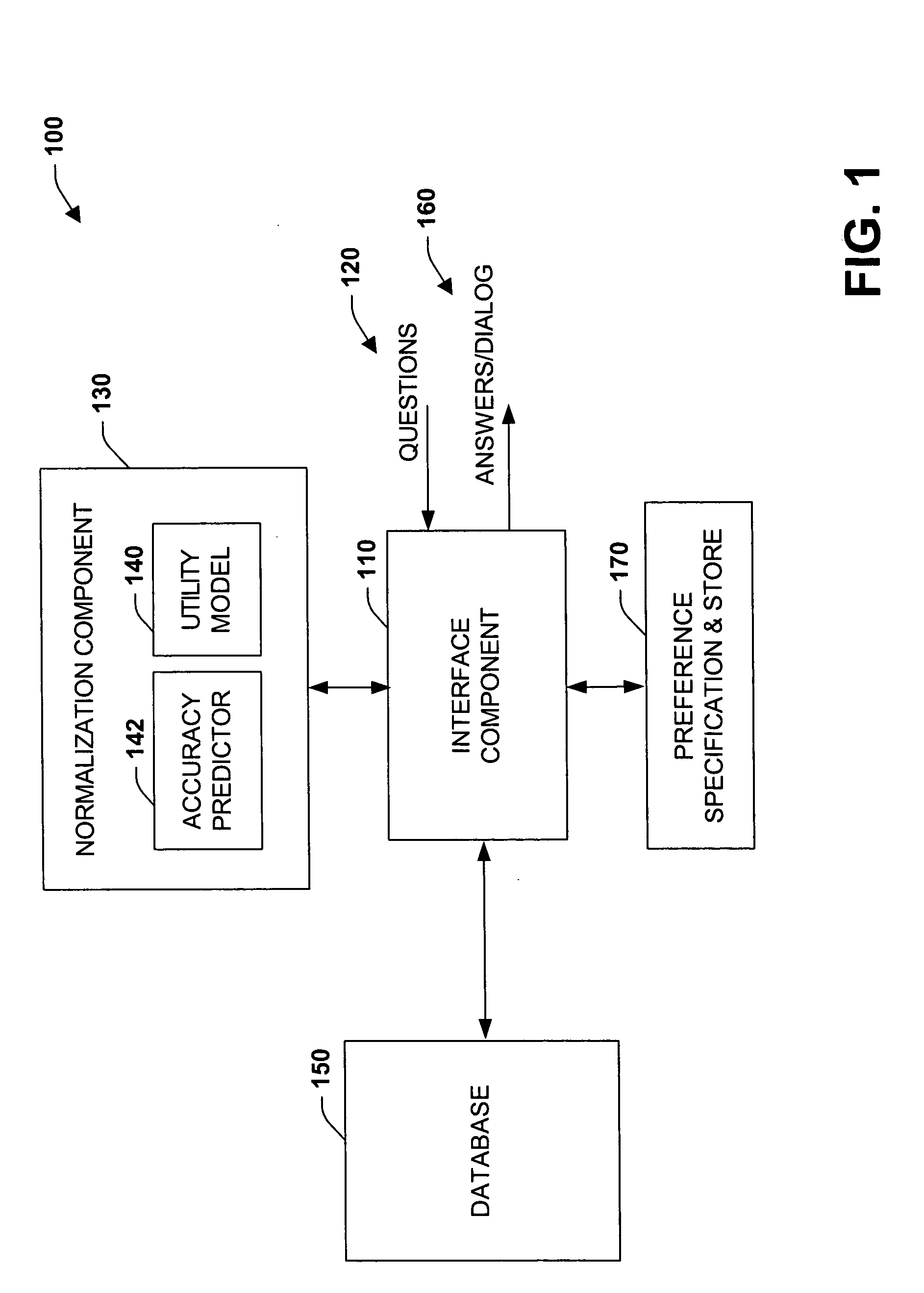Cost-benefit approach to automatically composing answers to questions by extracting information from large unstructured corpora
a large, unstructured corpus, cost-benefit technology, applied in the field of computer systems, can solve the problems of inability to automatically compose answers to questions from a single, inability to meet the requirements of search engines, so as to achieve the effect of enhancing the predictive power of models of answer accuracy and enhancing models
- Summary
- Abstract
- Description
- Claims
- Application Information
AI Technical Summary
Benefits of technology
Problems solved by technology
Method used
Image
Examples
Embodiment Construction
[0026] The present invention relates to a system and methodology to facilitate information extraction and learning from an unstructured corpora of information. This information can be retrieved from local and / or remote databases that house such information (e.g., web sites, local databases, electronic encyclopedias or dictionaries). In one aspect of the present invention, a normalization system is provided. The normalization system includes an interface component that receives data corresponding to a heterogeneous knowledge base such as from web sites or other sources. A normalization component applies a statistical or logical model that relates the expected accuracy or quality of answers to sets of information-acquisition actions, and a utility model capturing the costs and benefits associated with information extractions, to provide a regularized understanding of the value of extracting information from the knowledge base. The utility model is employed to provide dynamic controls ...
PUM
 Login to View More
Login to View More Abstract
Description
Claims
Application Information
 Login to View More
Login to View More - R&D
- Intellectual Property
- Life Sciences
- Materials
- Tech Scout
- Unparalleled Data Quality
- Higher Quality Content
- 60% Fewer Hallucinations
Browse by: Latest US Patents, China's latest patents, Technical Efficacy Thesaurus, Application Domain, Technology Topic, Popular Technical Reports.
© 2025 PatSnap. All rights reserved.Legal|Privacy policy|Modern Slavery Act Transparency Statement|Sitemap|About US| Contact US: help@patsnap.com



